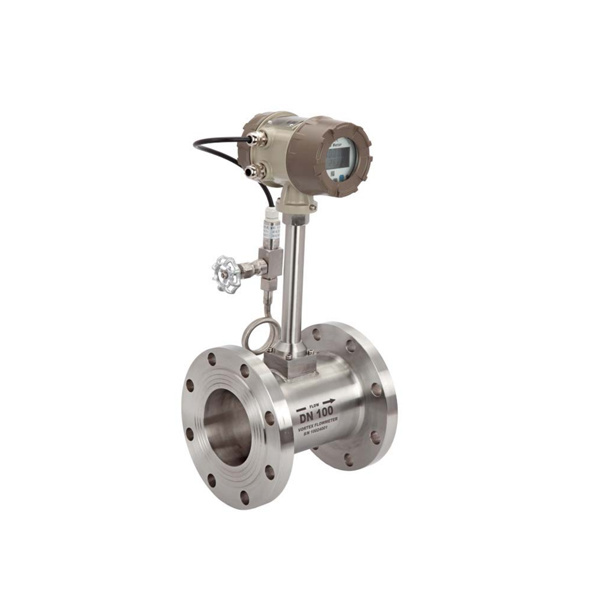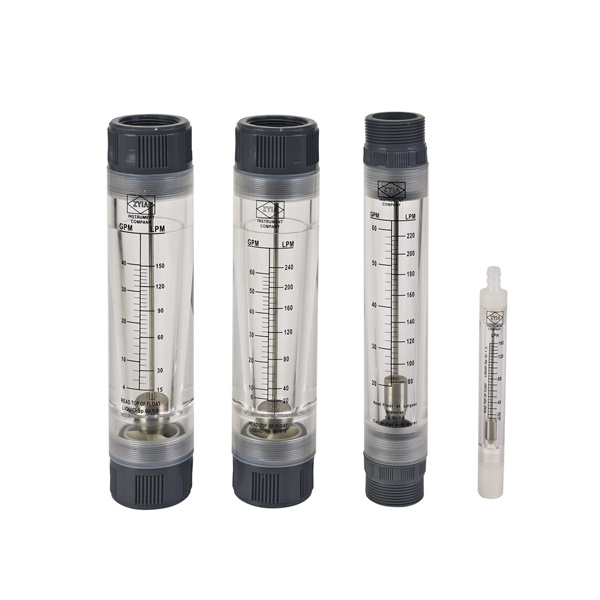Streamlining Analytical Processes with Multi-parameter Integration in Medical and Health Instrumentation
2025-08-14
Streamlining Analytical Processes with Multi-parameter Integration
In today's fast-paced healthcare environment, the need for efficiency and accuracy in analytical processes has never been more critical. Multi-parameter integration represents a significant advancement in the field of medical and health instrumentation, particularly with regard to water quality analysis. This article delves deep in
Streamlining Analytical Processes with Multi-parameter Integration
In today's fast-paced healthcare environment, the need for efficiency and accuracy in analytical processes has never been more critical. Multi-parameter integration represents a significant advancement in the field of medical and health instrumentation, particularly with regard to water quality analysis. This article delves deep into the role of multi-parameter integration in streamlining analytical processes, highlighting its benefits, technology, applications, and future prospects.
Table of Contents
- Understanding Multi-parameter Integration
- The Importance of Analytical Efficiency in Healthcare
- How Multi-parameter Integration Works
- Advantages of Multi-parameter Analyzers
- Key Technologies Driving Multi-parameter Integration
- Applications in Water Quality Analysis
- Challenges and Limitations
- Future Trends in Analytical Instrumentation
- Frequently Asked Questions (FAQs)
Understanding Multi-parameter Integration
Multi-parameter integration refers to the capability of analytical instruments to measure various parameters simultaneously. In the realm of medical and health analysis, this means that healthcare professionals can obtain multiple readings from a single sample, significantly enhancing the analytical workflow. Traditional analytical methods often require separate instruments for each parameter, leading to increased time, costs, and the potential for human error.
With multi-parameter analyzers, it becomes possible to conduct comprehensive assessments efficiently, providing a more holistic view of a sample's characteristics. This integrative approach is particularly vital in water quality analysis, where diverse parameters—such as pH, turbidity, dissolved oxygen, and contaminants—must be evaluated to ensure safety and compliance with health standards.
The Importance of Analytical Efficiency in Healthcare
In healthcare, analytical efficiency is paramount. The ability to deliver timely and accurate results can influence patient care and outcomes. For instance, in water quality testing, rapid analysis can detect harmful substances that pose health risks. Delays in these results could lead to significant health implications, particularly in vulnerable populations such as infants and the elderly.
Moreover, healthcare facilities are often burdened with limited resources. By employing multi-parameter integration in analytical processes, these facilities can optimize their resources, reduce operational costs, and improve patient outcomes significantly.
How Multi-parameter Integration Works
Multi-parameter analyzers utilize advanced technology to measure various chemical, physical, and biological parameters of a sample. These devices incorporate sensors, data acquisition systems, and sophisticated software to perform simultaneous analyses.
1. **Sensors**: The core of multi-parameter analyzers is their array of sensors, each designed to detect specific parameters. For instance, an analyzer may include sensors for measuring pH, turbidity, electrical conductivity, and various ions.
2. **Data Acquisition**: After the sensors collect the data, it is sent to a data acquisition system. This system processes the information, providing real-time readings and analyses.
3. **Data Interpretation**: Sophisticated software interprets the collected data, often utilizing algorithms to compare results against established standards. This step is crucial for ensuring the reliability of the findings.
4. **Reporting**: Finally, the analyzed data is compiled into a user-friendly report, making it easy for healthcare professionals to understand the results and make informed decisions.
Advantages of Multi-parameter Analyzers
The adoption of multi-parameter analyzers in healthcare settings offers several advantages, including:
1. **Time Efficiency**: By measuring multiple parameters at once, these analyzers drastically reduce the time required for analysis.
2. **Cost-effectiveness**: Multi-parameter analysis eliminates the need for multiple devices, leading to reduced equipment costs and maintenance expenses.
3. **Increased Accuracy**: With fewer handling steps and a unified approach, the likelihood of human error is minimized, enhancing the accuracy of results.
4. **Comprehensive Data**: Healthcare professionals gain access to a more comprehensive data set, allowing for better decision-making in patient care.
5. **Ease of Use**: Many multi-parameter analyzers are designed with user-friendly interfaces, ensuring that staff can operate them efficiently without extensive training.
Key Technologies Driving Multi-parameter Integration
Several technologies contribute to the effectiveness of multi-parameter integration in analytical instruments:
1. **Optical Sensors**: These sensors utilize light to detect changes in various parameters, such as turbidity and color, enabling precise measurements.
2. **Electrochemical Sensors**: Employed for measuring pH, conductivity, and ion concentrations, these sensors offer high sensitivity and accuracy.
3. **Microfluidics**: This technology allows for the manipulation of small volumes of fluids, facilitating rapid and efficient analysis.
4. **Data Analytics and Artificial Intelligence**: Advanced data analytics and AI improve the interpretation of complex datasets, providing insights that aid in decision-making.
5. **Cloud Computing**: With cloud technology, data can be stored and accessed remotely, ensuring real-time monitoring and analysis.
Applications in Water Quality Analysis
The impact of multi-parameter integration is profoundly felt in water quality analysis, where it serves as a critical tool for ensuring public health. Key applications include:
1. **Environmental Monitoring**: Regular water quality assessments are essential for environmental protection. Multi-parameter analyzers help detect pollutants, harmful microorganisms, and other contaminants.
2. **Wastewater Treatment**: In the treatment process, monitoring parameters such as chemical oxygen demand (COD) and total suspended solids (TSS) is crucial. Multi-parameter integration facilitates efficient monitoring of these metrics.
3. **Drinking Water Safety**: Ensuring that drinking water meets health standards requires continuous testing. Multi-parameter analyzers allow for comprehensive checks to confirm safety and compliance with regulations.
4. **Aquaculture**: In aquaculture, maintaining optimal water quality is vital for fish health. Multi-parameter tools assist in monitoring conditions like oxygen levels and pH, ensuring a healthy environment for aquatic life.
5. **Research and Development**: Researchers utilize multi-parameter analysis to study water quality in various contexts, contributing to advancements in environmental science and public health.
Challenges and Limitations
Despite their advantages, multi-parameter analyzers face challenges that need addressing:
1. **Calibration and Maintenance**: Regular calibration is essential for accuracy. Failure to maintain instruments can lead to erroneous results.
2. **Complexity of Data**: While multi-parameter analysis provides comprehensive data, interpreting these results can be complex, requiring skilled personnel.
3. **Initial Costs**: The initial investment for multi-parameter analyzers can be high, which may deter some healthcare facilities from adopting this technology.
4. **Technology Limitations**: Not all analyzers can measure every parameter effectively, which may necessitate supplementary testing methods.
Future Trends in Analytical Instrumentation
As technology advances, the future of multi-parameter integration in analytical instrumentation looks promising:
1. **Increased Automation**: Automation will streamline workflows further, reducing manual intervention and improving efficiency.
2. **Enhanced Connectivity**: The integration of IoT (Internet of Things) will facilitate real-time monitoring and remote management of analytical systems.
3. **Miniaturization**: The trend towards smaller, portable analyzers will enable on-site testing, making it easier to conduct assessments in various environments.
4. **Artificial Intelligence Integration**: AI will play a significant role in data analysis, improving predictive capabilities and decision-making processes.
5. **Sustainable Practices**: As healthcare prioritizes sustainability, multi-parameter analyzers will evolve to minimize waste and energy consumption.
Frequently Asked Questions (FAQs)
1. What is a multi-parameter analyzer?
A multi-parameter analyzer is an instrument that measures multiple water quality parameters simultaneously, such as pH, turbidity, and dissolved oxygen.
2. How does multi-parameter integration benefit healthcare?
It enhances efficiency, reduces costs, and improves accuracy by allowing simultaneous analysis of various parameters, leading to better patient outcomes.
3. What parameters can multi-parameter analyzers measure?
Common parameters include pH, turbidity, dissolved oxygen, electrical conductivity, total dissolved solids, and various ions.
4. Are multi-parameter analyzers easy to operate?
Yes, most modern multi-parameter analyzers are designed with user-friendly interfaces, allowing healthcare professionals to operate them with minimal training.
5. What are the primary applications of multi-parameter testing?
They are primarily used in environmental monitoring, wastewater treatment, drinking water safety, aquaculture, and research and development.
Conclusion
In conclusion, **streamlining analytical processes with multi-parameter integration** is transforming the landscape of medical and health instrumentation. By enabling simultaneous measurement of multiple parameters, these advanced analyzers are enhancing efficiency, accuracy, and overall patient care. As technology continues to evolve, the future looks bright for multi-parameter integration, promising more innovations that will further improve healthcare outcomes and environmental safety. Embracing this technology is not just a step forward in analytical processes but a leap towards a healthier, safer world.
Multi-parameter Online Analysis System Integration
RELATED NEWS
2025-08-14
Streamlining Analytical Processes with Multi-parameter Integration
In today's fast-paced healthcare environment, the need for efficiency and accuracy in analytical processes has never been more critical. Multi-parameter integration represents a significant advancement in the field of medical and health instrumentation, particularly with regard to water quality analysis. This article delves deep in
Understanding Vorex Flow Meters: Key Insights for Your Measurement Needs
2025-08-07
Vorex flow meters are sophisticated instruments designed to measure the flow rate of gases and liquids in various applications. They are essential tools in industries such as water treatment, chemical processing, and HVAC systems, where accurate flow measurement is crucial for maintaining efficiency and safety.
One of the key features of Vorex flow meters is their ability to handle a wide range of
A Comprehensive Guide to Selecting the Right Acrylic Flow Meter for Your Needs
2025-07-31
A Comprehensive Guide to Selecting the Right Acrylic Flow Meter for Your Needs
Table of Contents
1. Introduction to Acrylic Flow Meters
2. Understanding the Importance of Flow Measurement
3. Types of Acrylic Flow Meters
3.1 Positive Displacement Flow Meters
3.2 Turbine Flow Meters
3.3 Magnetic Flow Meters
3.4 Ultrasonic Flow Meters
4. Key Features to Consider When Selecting an Ac





